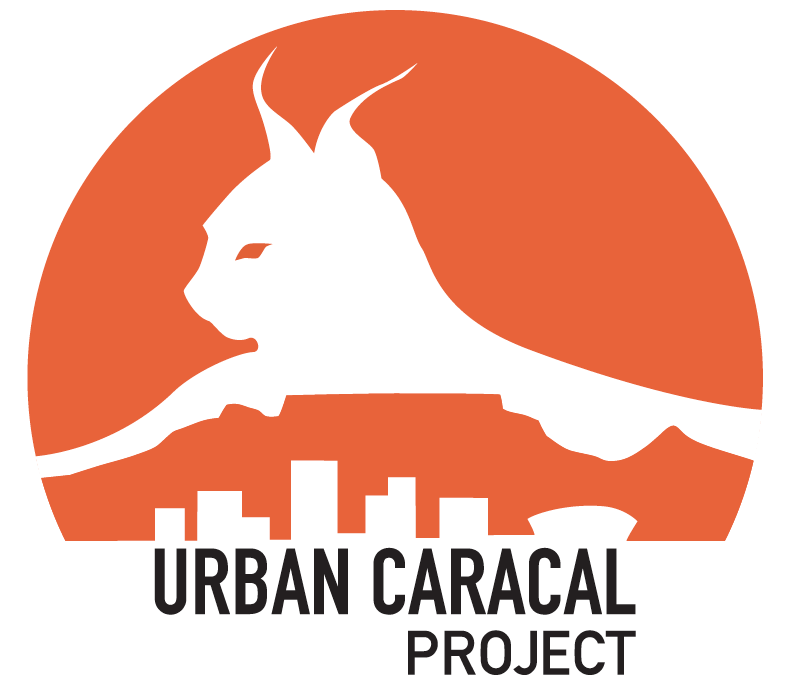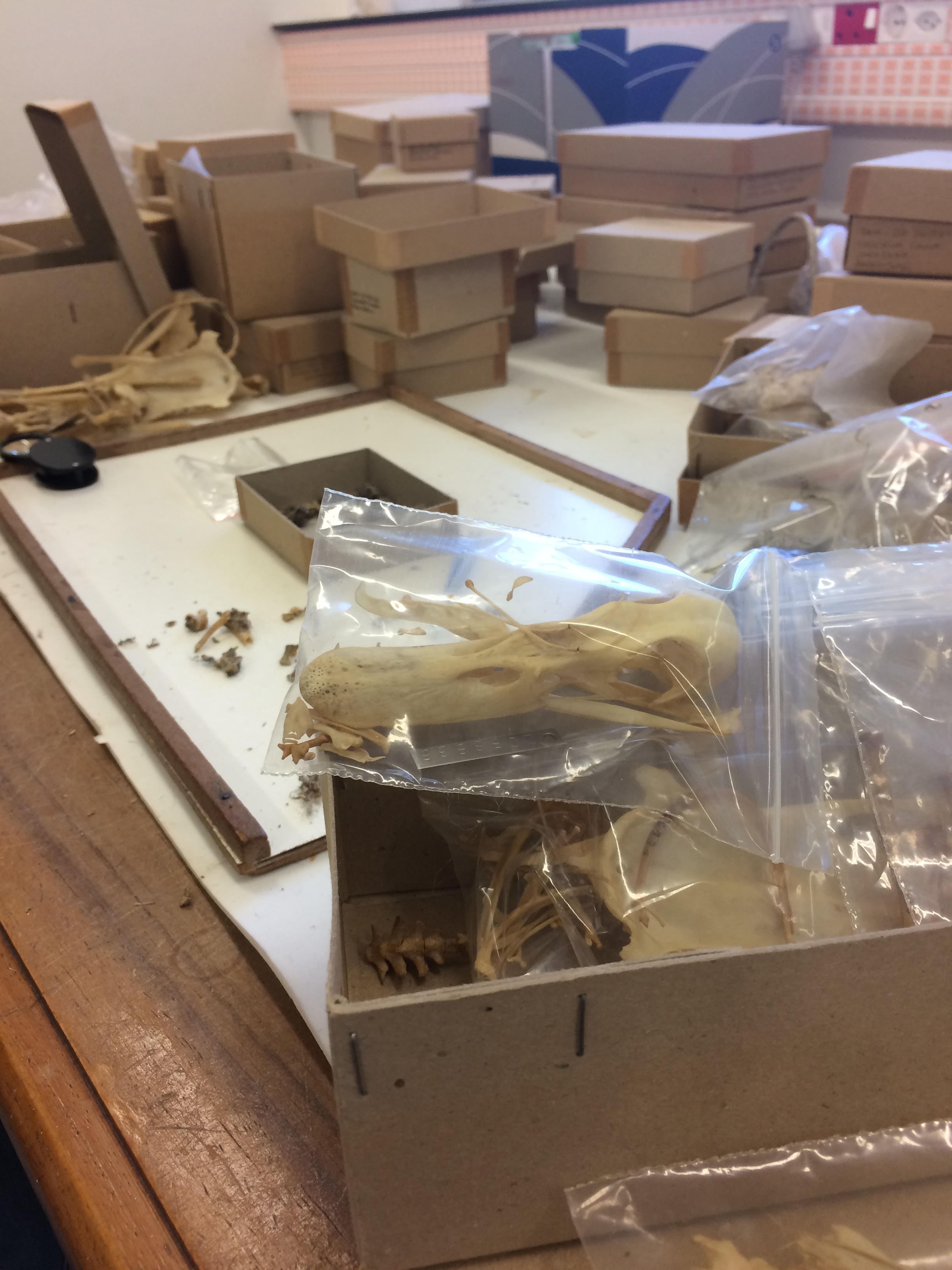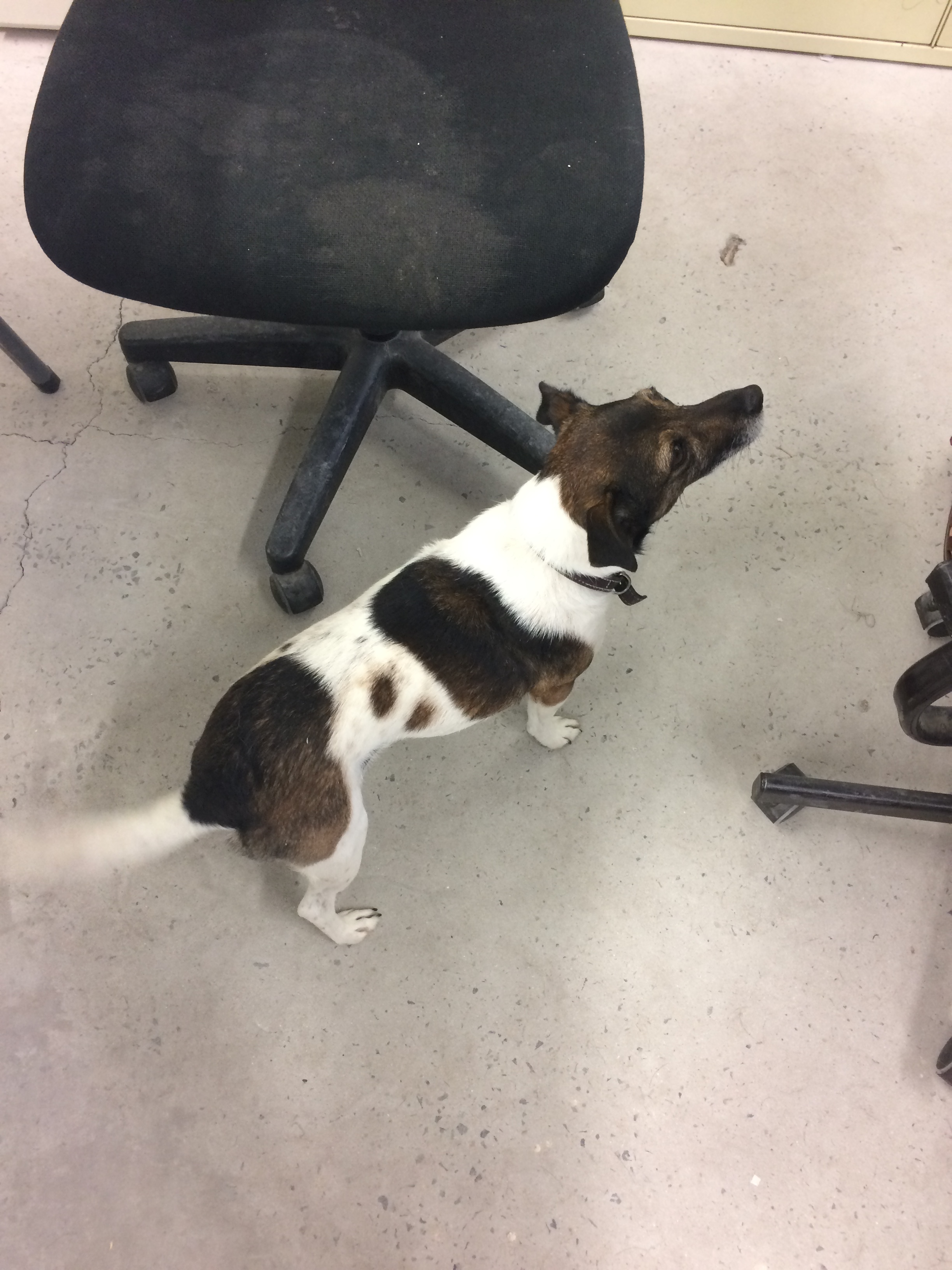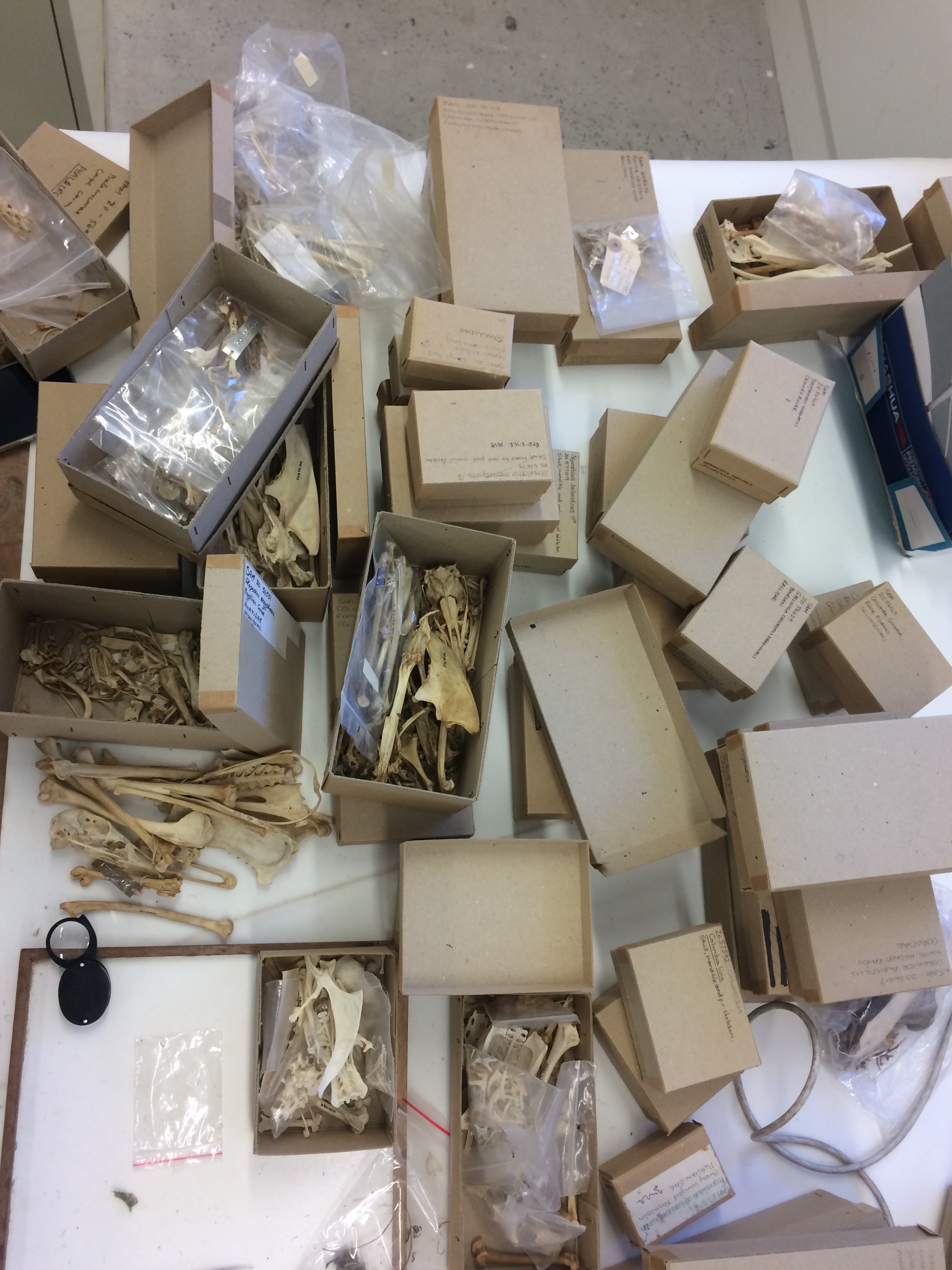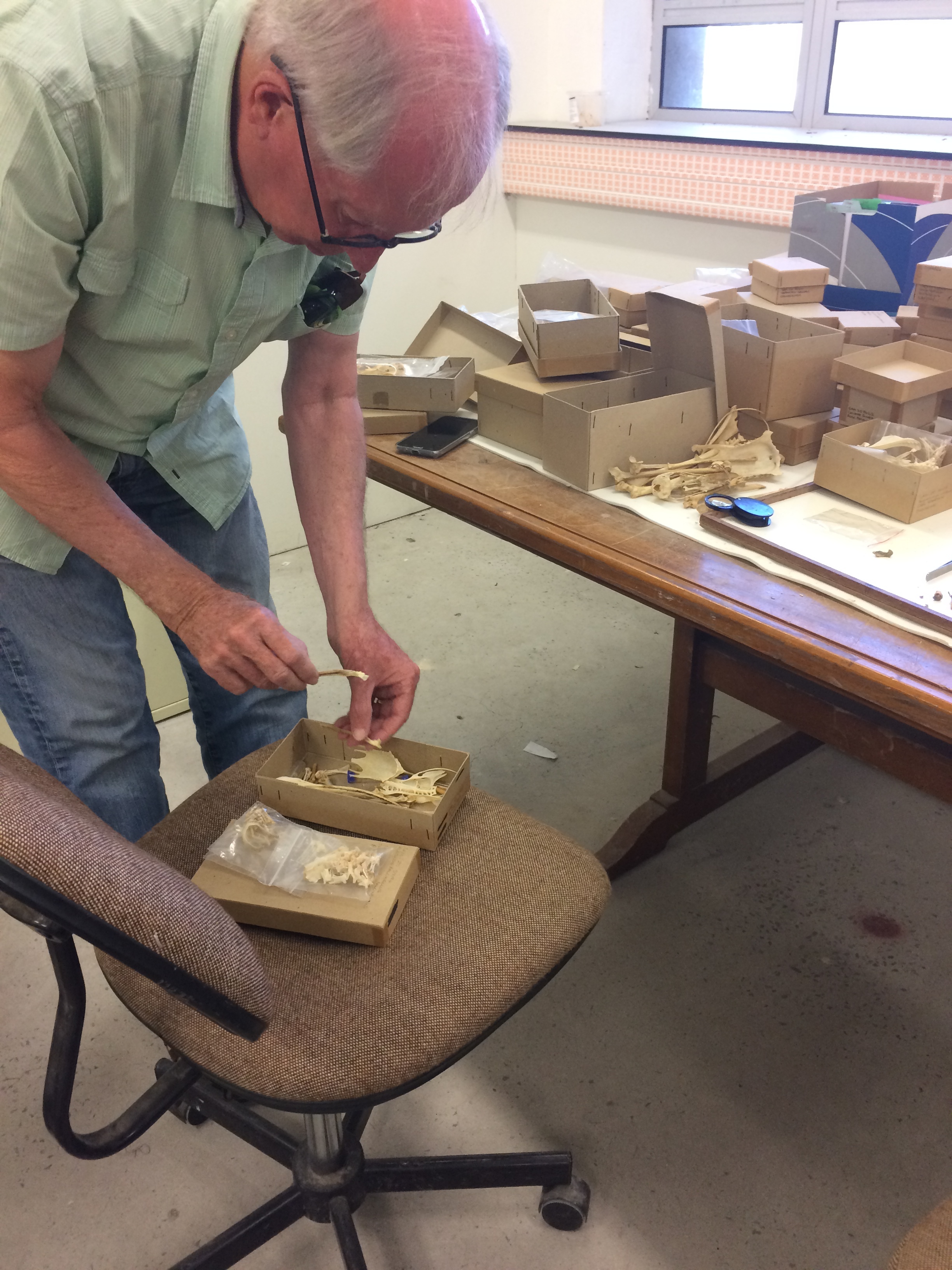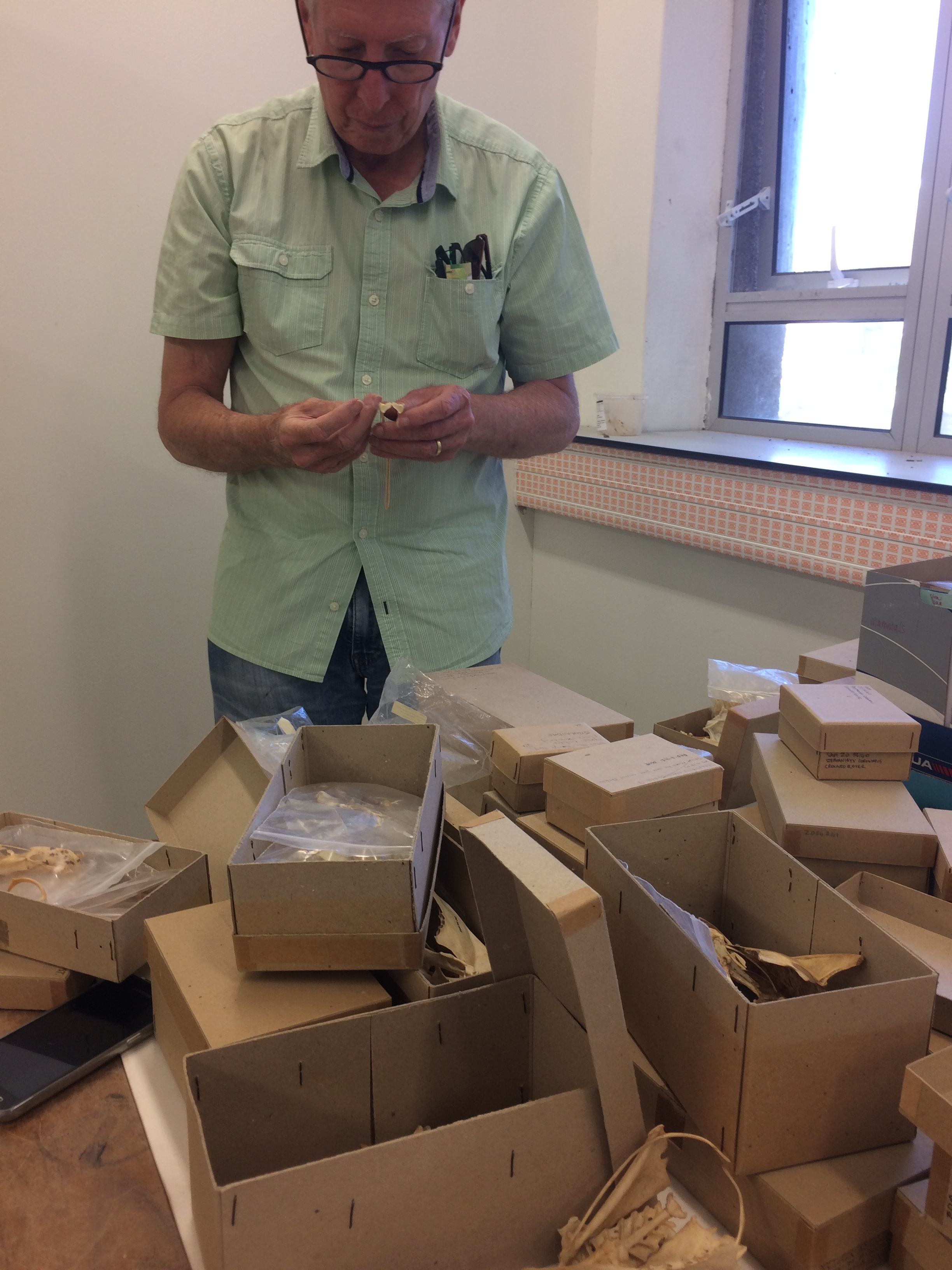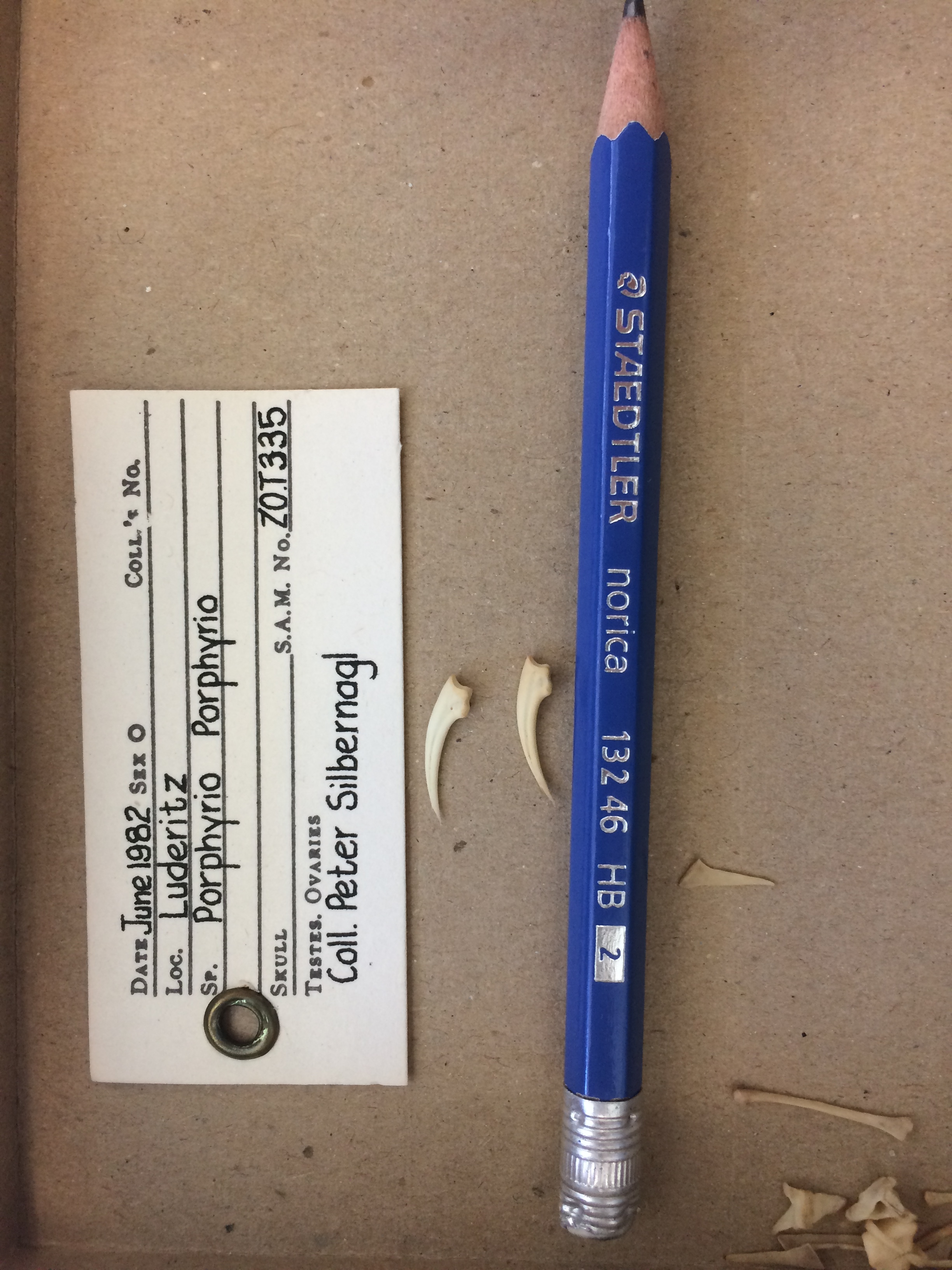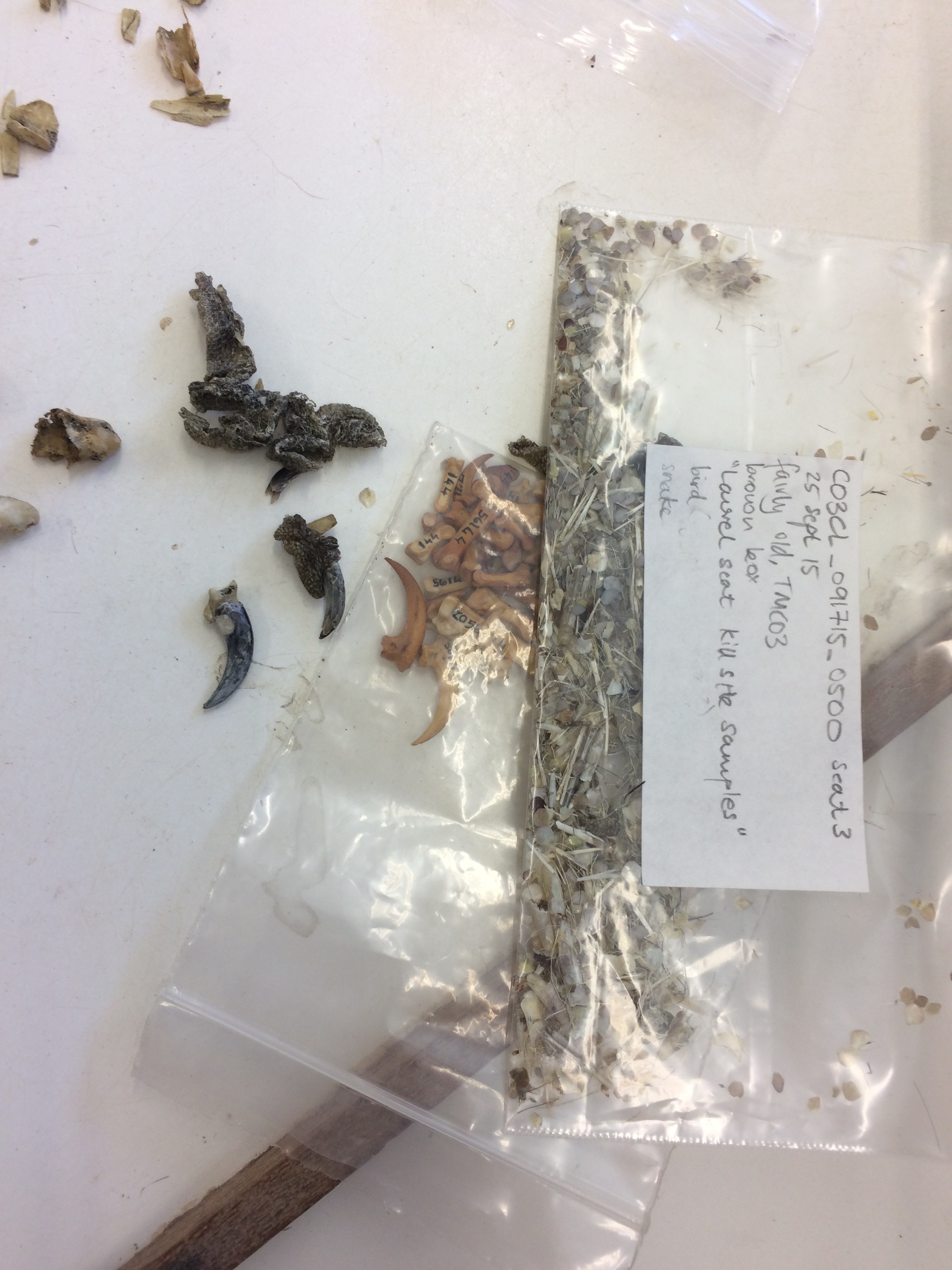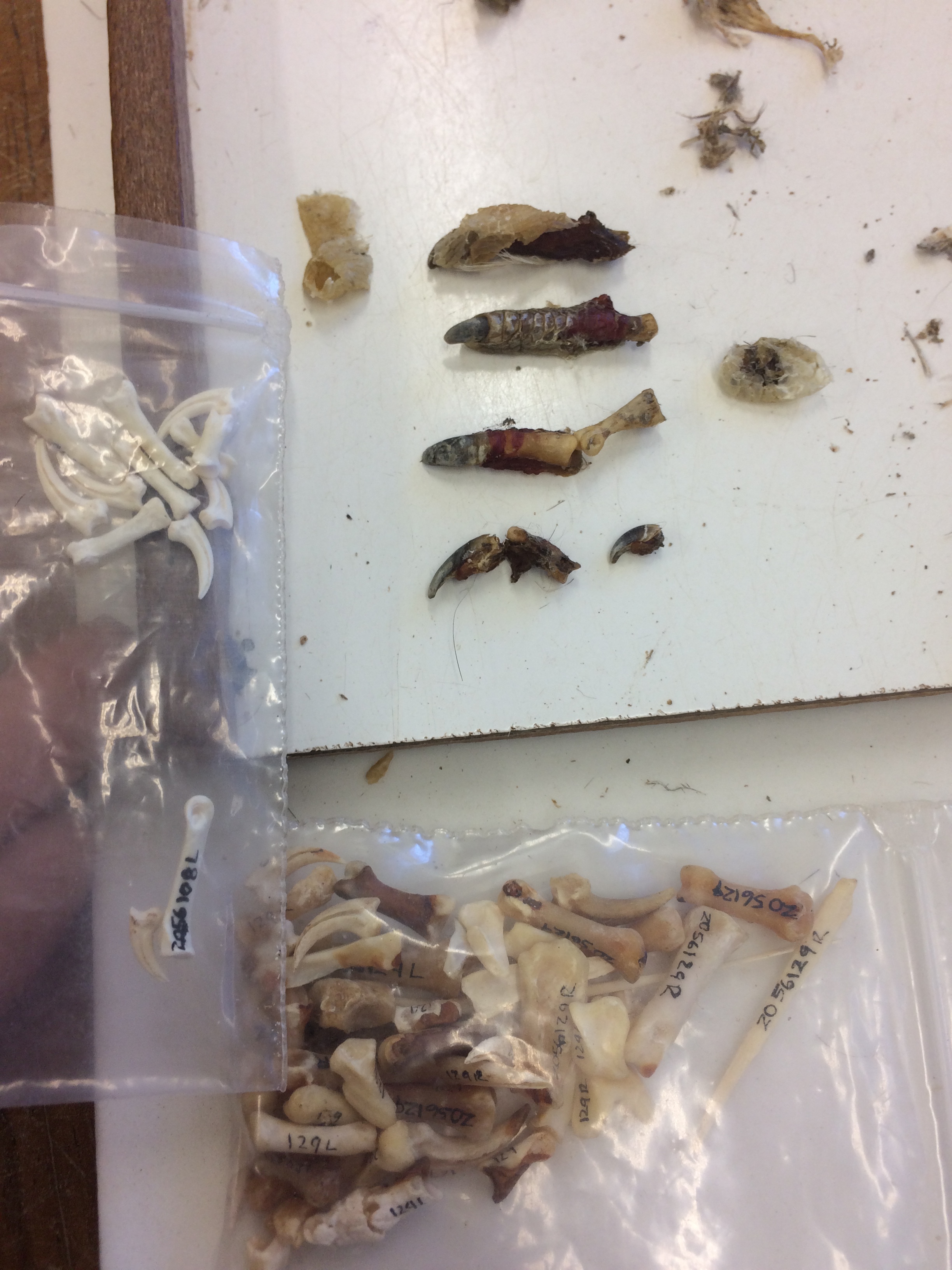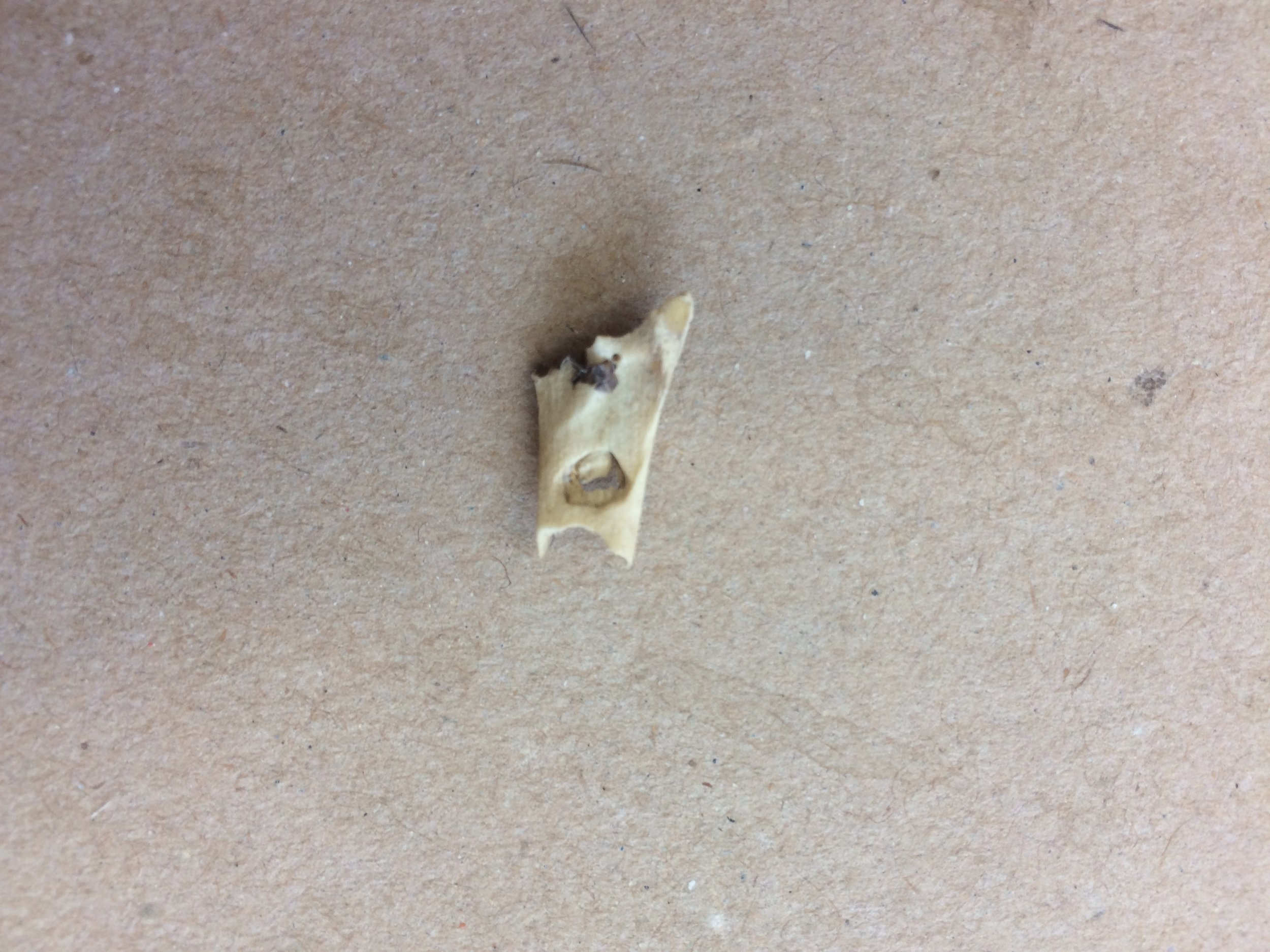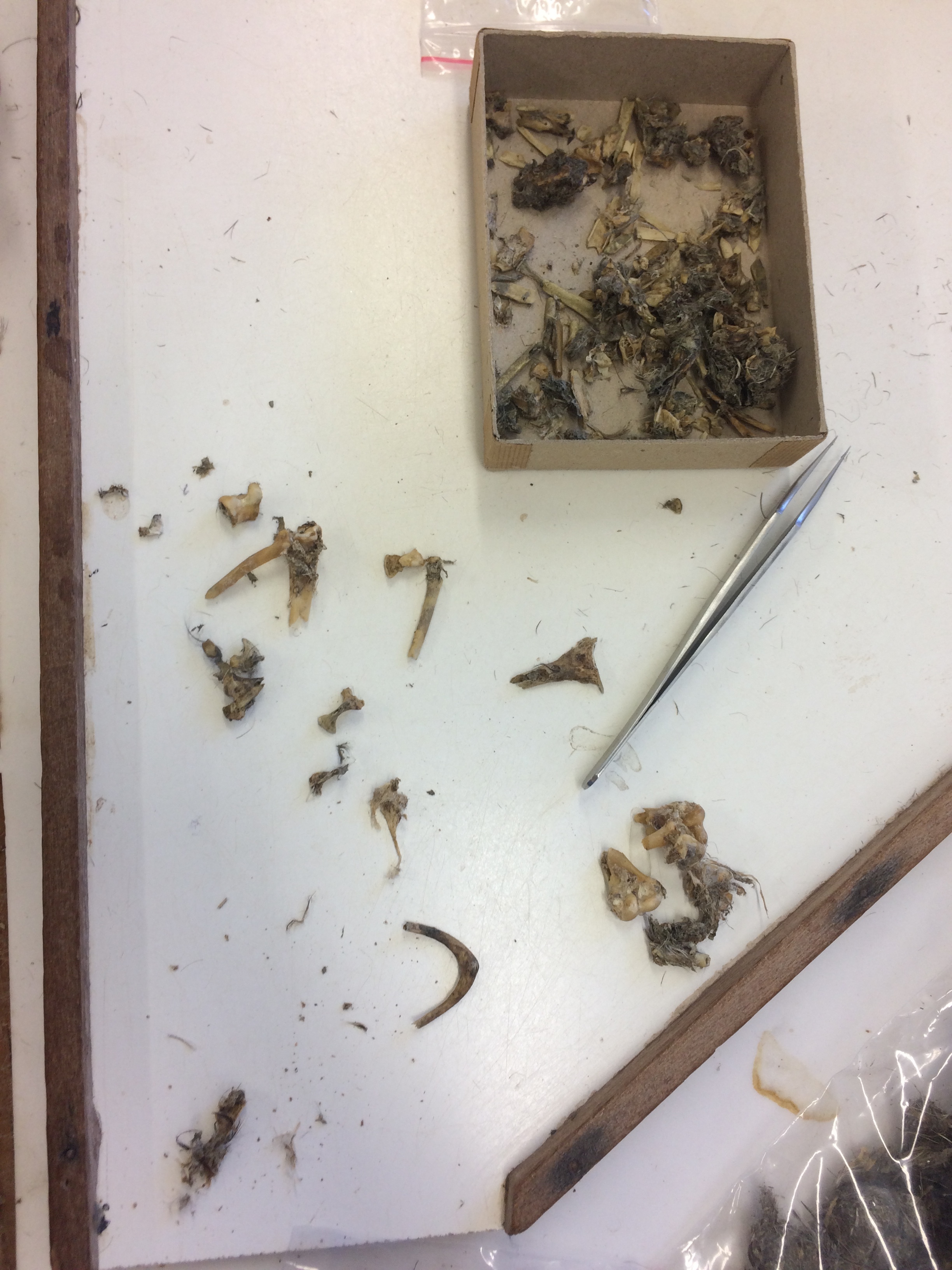“Oh look, another cape cormorant”: some trips to the museum
The last few weeks have been spent preparing samples for further identification by bone. This involved carefully sorting through each cleaned and dried scat sample to pick out the hard bits (i.e. bones, teeth, claws and nails) and package them separately. This makes it easier for comparison to reference skeletal material. Next, I decided to reorganise the samples according to prey group by date: rodents (the large majority!), other mammals, birds and reptiles. With all my samples neatly packed and organised they were ready for a trip to the museum!
I was very excited to have (finally) organised a meeting with Graham Avery, a retired museum curator and archaeozoologist at Iziko Museums of South Africa. He has expertise in identifying southern African bird bones, as well as larger mammals. With his little dog Suzy for company, we quickly got to work looking through my bird samples, using his impressive collection of reference bird skeletons. Each reference specimen has been carefully cleaned, each bone neatly labeled and placed into a brown cardboard box.
The trick is comparing a broken piece of mangled bone from the scat to a bone from the reference collection – which sometimes takes a while to find! Graham is remarkably good at this. If a bone is diagnostic, even if it’s just a fragment, we can narrow it down to a specific bird group and very often to a specific species. The best samples are those with a bit of coracoid, quadrate, furcula, tarsometatarsus or humerus.
Sometimes the sample resembles “rice crispies” (as Graham puts it), but quite often there was something identifiable. Often, we just have to use what we can get… Claws can be quite informative:
Sometimes there’s evidence of the caracal feeding on the bones:
And sometimes we have to look at a few different pieces. This gets tricky when there’s more than one species in the sample.
In the beginning we had a nice variety of birds: Cape francolin, Egyptian goose, guinea fowl, yellow billed duck and a gull here and there. However, as we started getting to the Cape Point area samples, things got a little less varied and a lot more predictable very fast. Things is, the caracals only really eat cormorants down there. Which would have been fine, except that all those samples were grouped together. So we had to look at 88 cape cormorant samples. Consecutively.
Fortunately, things have become a bit more interesting now that we’ve moved onto what I labeled as “unknown” and the larger mammals. We’re still working on those, and I’m really loving finally getting some confirmed identifications! It’s such a relief after staring at these samples for so long. The next step is to meet with Graham’s wife Margaret Avery who is the go-to expert on southern African micro-mammal cranial bones and teeth. I know most of the samples will be vlei rat, but I’m super interested to see which other species of rodents we’re going to find.
